There are a number of potential reasons why your Kohler toilet flushes too fast, including:
- Kohler toilet flapper/canister valve closes too fast
- Water pressure in the Kohler toilet tank
- Clogged Drainage hole
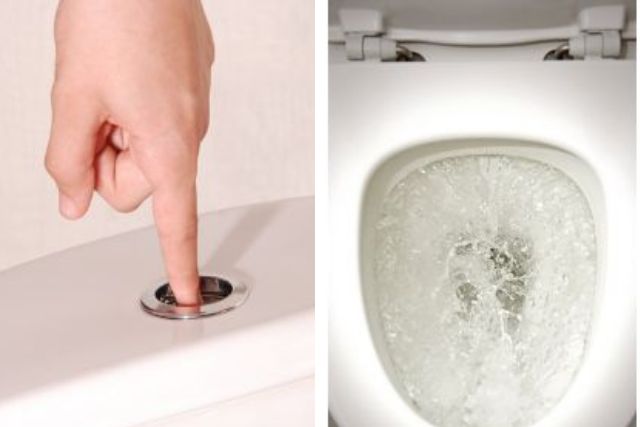
To fix these issues, you can clean the flapper valve or adjust the flapper chain. If the problem persists, you can replace the flapper valve after performing these steps.
Let’s explore what Kohler toilets may cause by flushing too fast, and some possible solutions. Whether you’re a DIY enthusiast or considering hiring a professional plumber, this post will provide the best information you need.
Table of Contents
Quick Fix Chart About Kohler Toilet Flushes Too Fast
Let’s check out a quick fix chat about Kohler toilet flushes so quickly:
| Problem | Reasons | Solutions |
| 1. Kohler toilet flapper closes too fast | > Damaged flapper > Loose flapper chain > Foam float produces half float > Waterclogged float | > It causes water to rush into the bowl too quickly. |
| 2. Water pressure in kohler toilet | > It causes water to rush into the bowl too quickly. | > Install a pressure-reducing valve > Adjust a pressure-reducing valve > Replace the toilet fill valve > Install a new flush valve |
| 3. Drainage hole is clogged | > Mineral buildup > Debris | > It causes water rush into the bowl too quickly. |
Kohler Toilet Flushes Too Fast [3 Simple Fixes]
As homeowners, we all want our toilets to function properly and efficiently. One common issue that many people face is a Kohler toilet that flushes too fast. While this may seem like a minor inconvenience, it can actually lead to problems down the line.
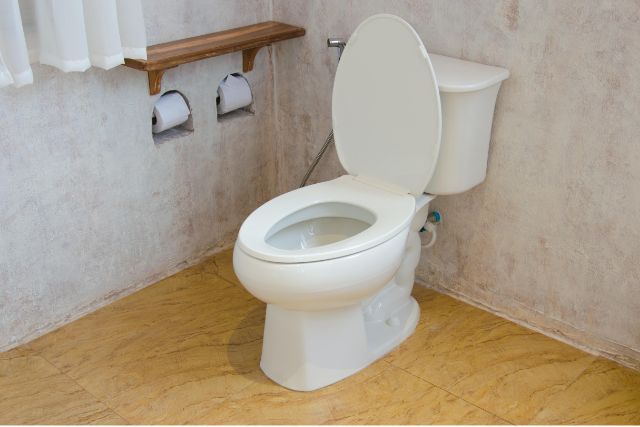
That’s why it’s important to address the issue as soon as possible. So, we aim to provide you with the best solution for your Kohler toilet needs. Here’e how:
1. Kohler Toilet Flapper Closes Too Fast
It is most likely that a quick shutoff of the flapper is the main cause of toilets flushing too fast. Usually, the toilet flapper is a component of the toilet tank that controls the flow of water from the tank to the bowl during a flush.

When the flush lever is pushed, the flapper lifts off its seat, allowing water to rush out of the tank and into the bowl. Once the water is out, the flapper drops back into place to seal the tank and stop the flow of water.
However, sometimes the flapper can close too quickly, which can cause several issues. If the flapper closes too quickly, it can limit the amount of water per flush, leading to poor flushing performance.
Reasons:
In order to understand why the flapper closes too fast, there are a few things to consider:
i) Damaged Flapper:
Over time, they can become damaged if exposed to harsh chemicals or wear and tear.
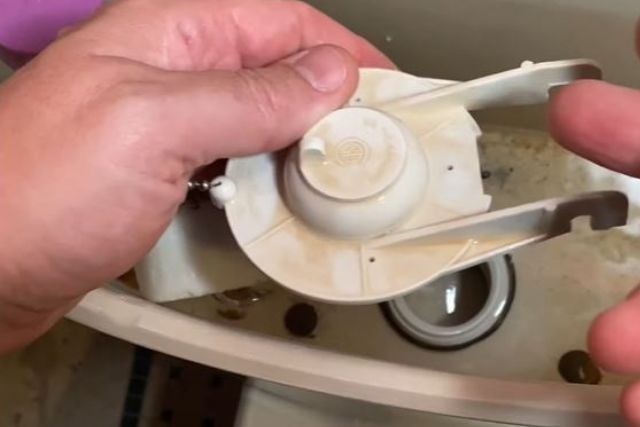
This can lead to several problems, such as a toilet that flushes too fast or fails to flush properly. In most cases, the flapper shuts early when it becomes dirty and heavy.
ii) Loose Flapper Chain:
Long chains connecting the flapper valve to the flush handle may cause a toilet not to flush correctly.
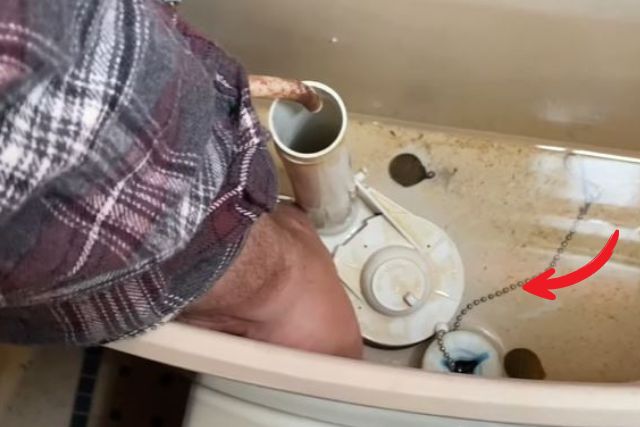
If the chain is too long, it may get twisted around the post. As a result, the flapper doesn’t stay open long enough to flush the toilet.
iii) Foam Float Produce Half Flush:
Modern flush systems include flexible foam that is linked to the chain on some toilets. This foam enables half-flush activation, which reduces water consumption.
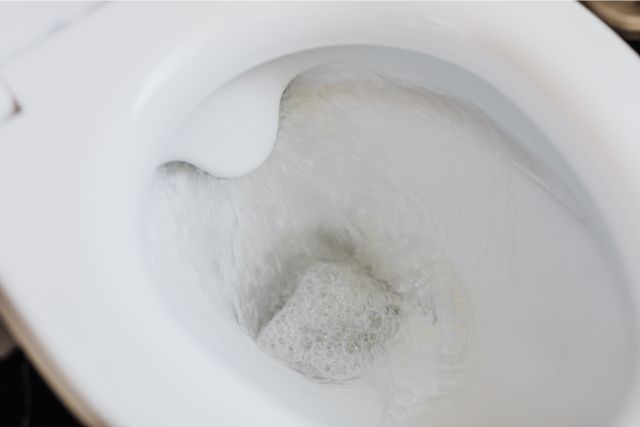
In some instances, this foam causes problems, such as closing the toilet flappers prematurely. Consequently, water is wasted due to fast flushing.
iv) Waterclogged Float:
Waterlogged float is a common issue that can occur in Kohler toilet tanks due to frequent flushes. The float in your toilet tank is responsible for regulating the water level in the tank.
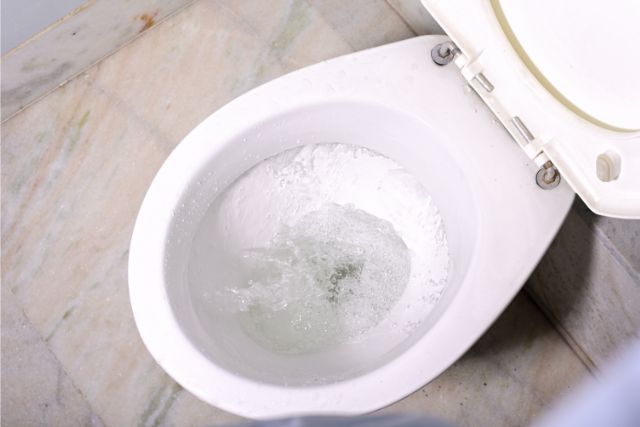
As water flows through the toilet tank, the float wears out. So, when it becomes waterlogged, it can’t float. Thus it’s leading to a flapper closing too fast.
How To Fix:
Fortunately, there are a few tips you can take to address this problem. You can solve the issue of a Kohler toilet flapper closing too rapidly by following these tips:
i) Clean The Flapper Valve
Regularly cleaning the flapper valve can help prevent issues such as a toilet that constantly runs or a toilet that flushes too quickly. Cleaning a flapper involves the following steps:

Step- 1: Turn off the water supply to the toilet. Remove the toilet tank lid and locate the flapper valve at the bottom of the tank.
Step- 2: Gently lift the flapper valve to inspect it for dirt, debris, or mineral buildup. If the flapper is dirty, use a soft-bristled brush or sponge to gently clean it.
Step- 3: If there is mineral buildup, soak the flapper in a mixture of equal parts water and vinegar for about an hour, then rinse it off with water.
Step- 4: Inspect the chain connecting the flapper valve to the flush handle and clean it if necessary.
Step- 5: Once you have cleaned the flapper valve, turn the water supply back on and replace the toilet tank lid. Finally, flush the toilet to ensure that the flapper valve is working properly.
ii) Adjust The Flapper Chain:
Fortunately, this is an easy problem to fix. You can adjust the length of the chain to ensure that the flapper valve stays open long enough to allow the water to flow through. Here are some steps to take:
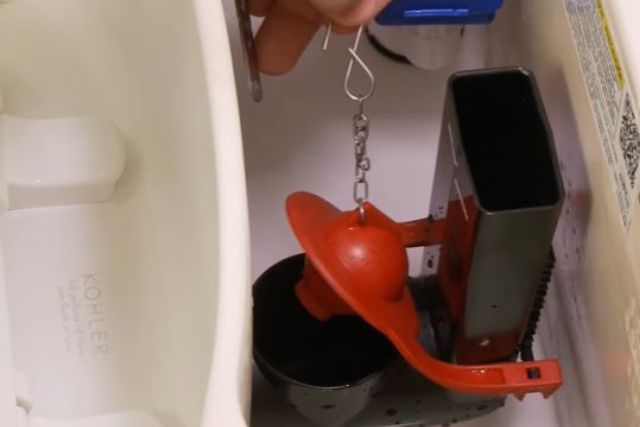
Step- 1: Turn off the water supply to the toilet.
Step- 2: Remove the toilet lid and locate the chain connecting the flapper valve to the flush handle.
Step- 3: Determine how long the chain is and whether it is too long. If the chain is too long, remove a few links to make it shorter.
Step- 4: Test the chain by flushing the toilet and observing how long the flapper stays open.
Step- 5: Repeat the process until the flapper stays open long enough for a complete flush.
Step- 6: Once you have achieved the desired length, turn the water supply back on and replace the toilet lid.
iii) Remove Foam Float:
There are two simple solutions that you can try if you are experiencing foam float issues:
First, you press both tank buttons simultaneously, the toilet should flush completely. As a result, it prevents water wastage.
Second, you can remove the foam float by following these steps:
Step #1: Turn off the water supply to the toilet.
Step #2: Remove the toilet tank lid and locate the foam float on the chain.
Step #3: Unhook the foam float from the chain and remove it from the tank.
Step #4: Turn the water supply back on and replace the toilet tank lid.
iv) Replace The Flapper valve:
Replacing the flapper valve in a toilet is a simple process that can help solve the too-fast flushing problem in Kohler toilets. Replacing the flapper valve requires the following steps:
Step #1: Make sure the toilet is not receiving any water. Inspect the toilet tank flapper valve at the bottom.
Step #2: Remove the chain connecting the flapper valve to the flush handle. Ensure the flapper valve is free from any tabs or attachments.
Step #3: Take note of the make and model of your toilet and purchase a replacement flapper valve that matches those specifications.
Step #4: Assemble the new flapper valve by attaching it to the tabs or attachments. Make sure the chain has enough slack to fully open the flapper valve after reconnecting it.
Step #5: Turn the water supply back on and replace the toilet tank lid. Test the new flapper valve by flushing the toilet to ensure that it seals and opens correctly.
v) Replace The Float With Flapper
Replace your waterlogged float with a flapper in your toilet tank to prevent water wastage. Also, it ensures proper flushing. Here are some solutions to replace the waterlogged float:
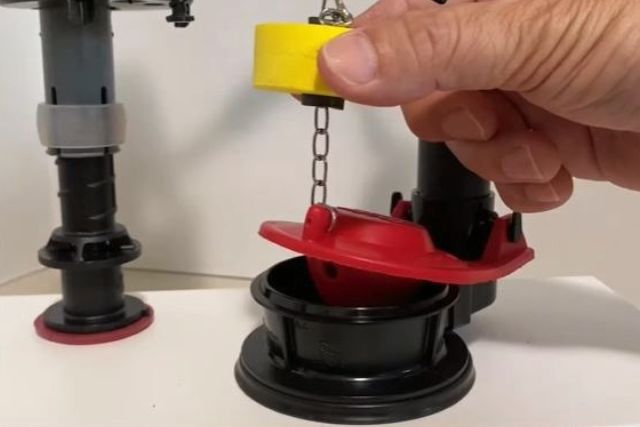
Step- 1: Purchase a Kohler flapper with a float that fits different toilet types and supports stronger flushes.
Step- 2: Turn off the water supply to the toilet tank and drain all the water from the tank.
Step- 3: Remove the old waterlogged float and replace it with the new Kohler flapper with float.
Step- 4: Turn the water supply back on and check for leaks.
Step- 5: Test the toilet by flushing it and ensuring that the new float works correctly.
How To Fix:
You can try the following solutions to see if they work for you:
- Replace the valve seal with a new one. Then, adjust the chain tension or reinstall the flush valve chain properly. Also, make sure there is not too much slack in the chain. If so, simply unhook it and re-hook it into a shorter link.
- Ensure the water level in the tank is correct by adjusting the float or fill valve. Clean the flush valve to remove any debris or mineral buildup.
- Inspect the fill valve for any defects or issues and replace it if necessary.
- Follow the manufacturer’s instructions to correctly adjust the canister flush valve.
- Consider replacing the canister flush valve if none of the above solutions work.
- Check the water pressure in your home and install a pressure regulator if it’s too high.
Note: It’s important to consult the specific manual or guidelines provided by Kohler for your toilet model, as different models may have unique instructions or requirements for troubleshooting and repair.
However, If the issue persists or you are unsure what steps to take, contact a plumber or qualified technician for assistance.
2. High Water Pressure In Kohler Toilet
Having high water pressure can cause a Kohler toilet to flush too fast. High water pressure can cause the water to rush into the bowl too quickly.
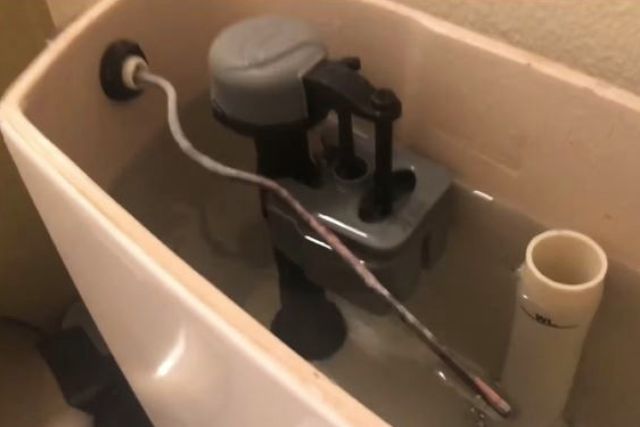
As a result, it causes flush too fast. Furthermore, it creates a loud and forceful flush, which often damages the toilet’s components
How To Fix:
Here are some possible solutions to fix a Kohler toilet that flushes too fast due to high water pressure:
i) Install A Pressure-Reducing Valve:
A pressure-reducing valve can be installed on the water line leading to the toilet to regulate the water pressure. Aside from that, it prevents an excessive level from being reached.
This can be a relatively simple and effective solution to the problem of a Kohler toilet flushing too fast.
ii) Adjust The Existing Pressure-reducing Valve:
If a pressure-reducing valve is already installed, it may need to be adjusted to lower the water pressure. With the right tools and expertise, a plumber or DIYer can do this.
iii) Replace The Toilet Fill Valve:
If the toilet’s fill valve is old or damaged, it may be contributing to the problem of excessive water pressure.
You can regulate the flow of water in your tank with a new fill valve and pressure regulator. Also, make sure it doesn’t rush into the bowl too quickly.
iv) Install A New Flush Valve:
In some cases, a faulty flush valve can cause a Kohler toilet to flush too fast. Installing a new flush valve with a flow restrictor can help control the speed of the flush.
Also, it prevents excessive water pressure from damaging the toilet’s components.
3. The Drainage Hole Is Clogged
The drainage hole in a toilet tank becomes clogged, and water cannot flow into the toilet bowl. So, waste may need to be flushed multiple times due to incomplete flushing. Various substances may cause the clog, such as mineral buildup, debris, or hardened gunk.
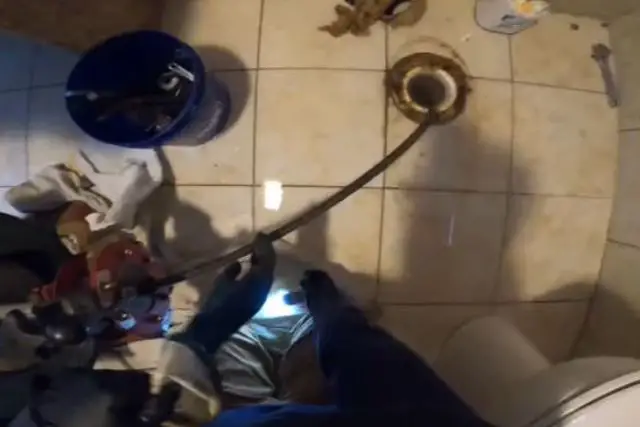
How to fix:
Here are some possible solutions to fix a clogged drainage hole in a toilet tank:
i) Unclog The Drainage Hole With A Screwdriver:
This involves removing the tank lid and locating the drainage hole at the bottom of the tank. Then, insert a screwdriver into the hole and move it up and down gently to dislodge any clogs. Be careful not to scratch the porcelain or damage any other parts of the tank.
ii) Use Hot Water And Baking Soda:
Mix half a cup of baking soda with hot water and pour it into the tank. Let it sit for a few minutes to dissolve any deposits or debris that may be causing the clog. Then, flush the toilet to see if the clog is gone. Repeat the process if necessary.
iii) Try Using A Plunger:
If the above methods don’t work, you can try using a plunger to dislodge the clog. Fill the toilet bowl with enough water to cover the plunger and create a seal. Then, push and pull the plunger vigorously to create suction and pressure. Thus it can help unclog the drain hole.
FAQs:
How Do I Adjust My Toilet To Flush Longer?
You can adjust your toilet to flush longer by turning the fill valve counterclockwise. Test the flush and make further adjustments if necessary. Be careful not to raise the water level too high, which can cause overflow and wastewater.
How Do I Know If The Flapper Is Causing My Kohler Toilet To Flush Too Fast?
When the flapper is worn or damaged, water may flow continuously into the bowl, resulting in a fast flush. You can check the flapper by removing the tank lid and flushing the toilet to observe the flapper’s movement.
What Should I Do If Im unable To Fix My Kohler Toilet That Is Flushing Too Fast?
If you’re unable to fix the toilet yourself, it’s recommended to contact a licensed plumber who can diagnose and fix the issue. They will have the necessary tools and expertise to identify and repair the problem effectively.
How Much Pressure Is In A Toilet Flush?
The pressure required for a toilet flush can vary depending on the type of toilet and the plumbing system. Gravity tank toilets typically operate at water pressures of 10 – 15 psi, while pressure-assisted tanks do. Flushometer toilets require higher pressures of 25 – 40 psi or more.
What Controls The Strength Of A Flush In A Toilet?
While the water level in the toilet tank affects flush strength, it isn’t the only factor. Other factors that control the strength of a flush in a toilet include a flapper valve, fill valve, clogs, and water pressure.
Conclusion:
If your Kohler toilet flushes too fast, it could be due to a number of factors. From adjusting the flapper chain to replacing the flush valve, addressing this issue can be a simple and straightforward process. So, if you identify the problem and implement the appropriate solution, your toilet will work again.
However, you can roll your eyes over the above article, since we have provided the best tips and tricks. If you still have any questions, don’t hesitate to comment below. However, maintaining your Kohler toilet is crucial to increase toilet flush power and avoiding future problems.

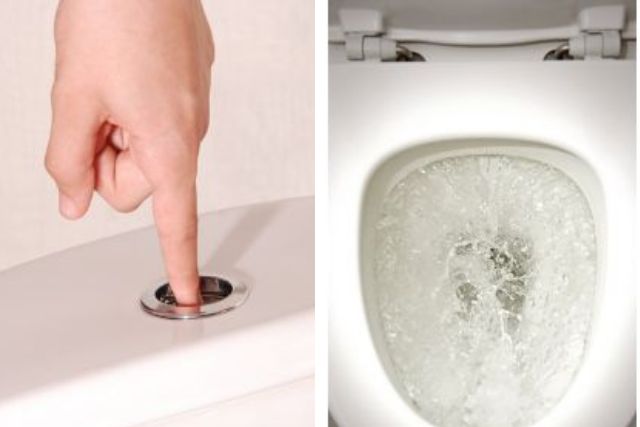
About James
James founded HomeUpgradeLab & was sharing his experiences to fix issues related to bathroom and toilet fixtures & fittings. Read to know more about James Hill & how he started this blog.